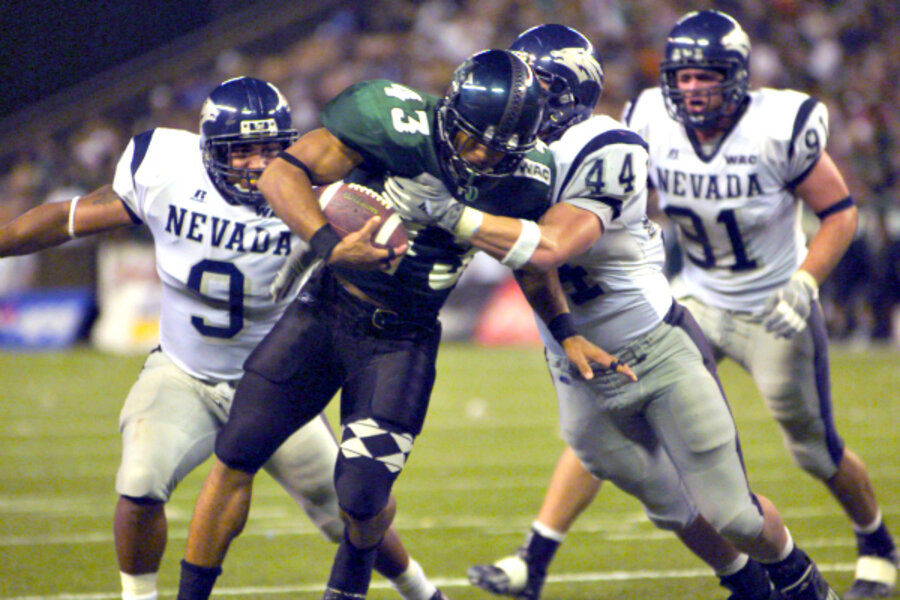Take steroids out of college football
Texas A&M versus Oklahoma should be a highly entertaining college bowl matchup, featuring A&M’s Johnny Manziel, the first freshman to win the Heisman Trophy that symbolizes college football’s top player.
And that bowl game, one of a plethora, is just the warm-up act to the national championship game itself, to be played in early January between Notre Dame and Alabama, two of the winningest college football programs in history.
But at what price will Americans be getting their annual dose of post-holiday football entertainment?
An investigative report released last week by The Associated Press shows that steroid use is almost certainly highly prevalent among the nation’s college football players who compete in the top-level leagues. Despite statements from college programs that they both endorse and enforce a ban on the use of steroids, patterns of dramatic growth in the size of players – and particularly their muscle mass – from the time they enter a college football program until they leave provide compelling evidence that steroids are being widely used.
While young men do continue to grow during their college years, and nutrition and weight-training can enhance growth, the AP report notes that many weight gains were so dramatic that without steroids, the odds of them happening “were roughly the same as an NFL quarterback throwing 12 passing touchdowns or an NFL running back rushing for 600 yards in one game.” In other words, nearly zero.
Professional sports such as baseball and cycling have endured their own drug scandals. The chief issue there has been fairness: Athletes who play by the rules, and don’t use banned substances, have had to compete against those gaining an unfair advantage by cheating.
College sports adds another ethical issue – how government funding is used, or abused: While professional sports are for-profit businesses, most major colleges and universities are public institutions whose employees are government workers, including coaches and trainers. (And even most private colleges benefit from tax exemptions that amount to a form of government subsidies.) There is legitimate public interest in how these programs are being run.
Along with its skewing of fair competition, the use of anabolic steroids in college sports is banned because the drugs are linked to numerous ill effects, including serious physical and mental problems.
But the AP investigation found that colleges are much more likely to test for the use of marijuana or other illegal “recreational” drugs than for steroids. Tests for these other drugs are much less expensive than tests for steroids, a possible reason they are conducted more often. But the paucity of steroid testing also raises questions as to whether schools look the other way at steroid use because it increases their teams' chances of victory on the field.
What can be done? Rather than a patchwork of individual enforcement schemes at individual institutions, as is the case now, colleges and universities could together adopt the much more rigorous testing regime used by the professional National Football League. Through a National Collegiate Athletic Association requirement, they could impose mandatory suspensions on players after their first positive test for steroids.
Cleaning up steroid use in the college game would promote fair competition and protect the health of athletes.
One student athlete AP spoke to had used steroids but later, after a religious conversion, quit using the drug and became his team’s chaplain. He told the AP that drugs weren’t necessary, that “God gave you everything you need.” That’s a good approach: Basing college football on God-given talent, developed through training and hard work and not through drug enhancement, would put it on a firmer foundation.








